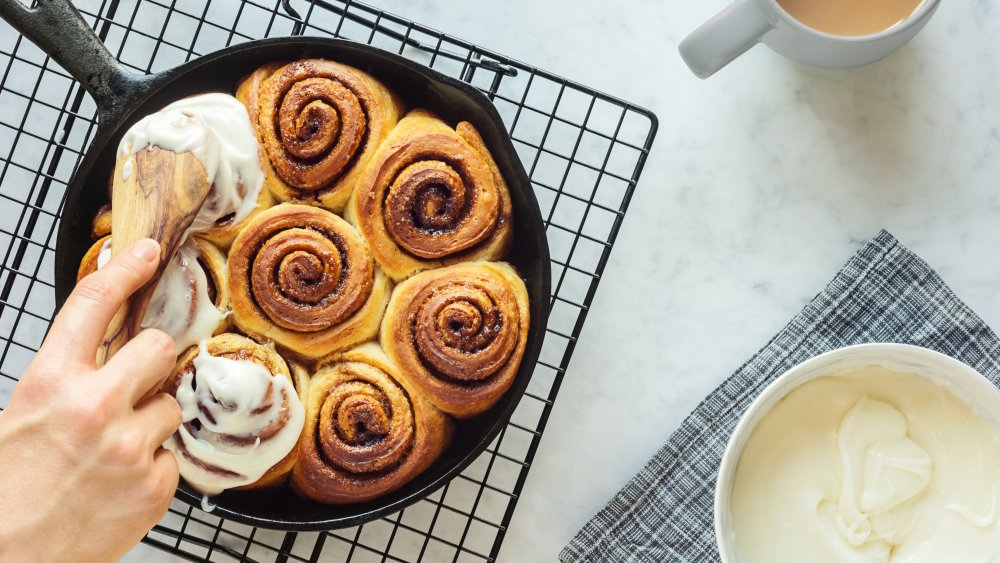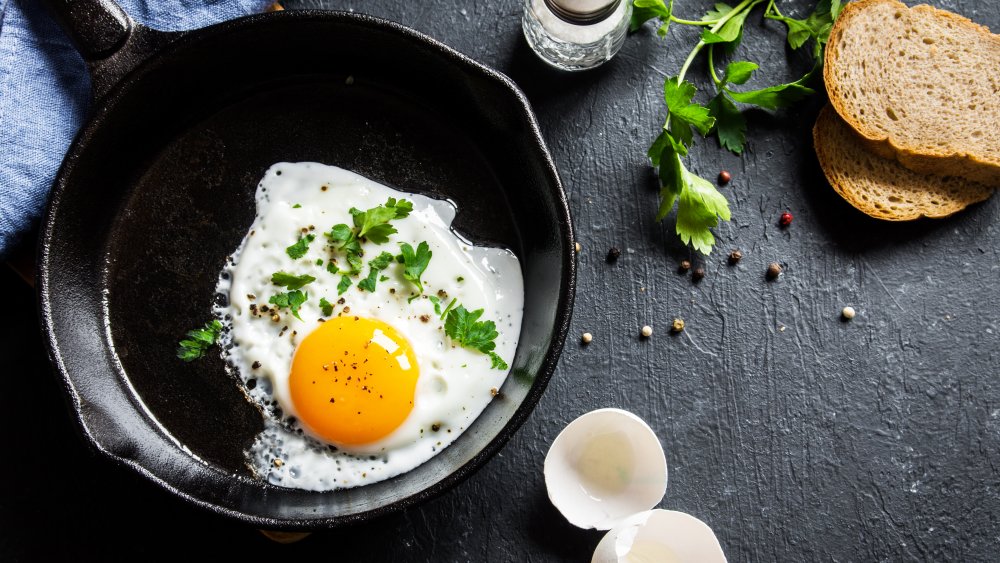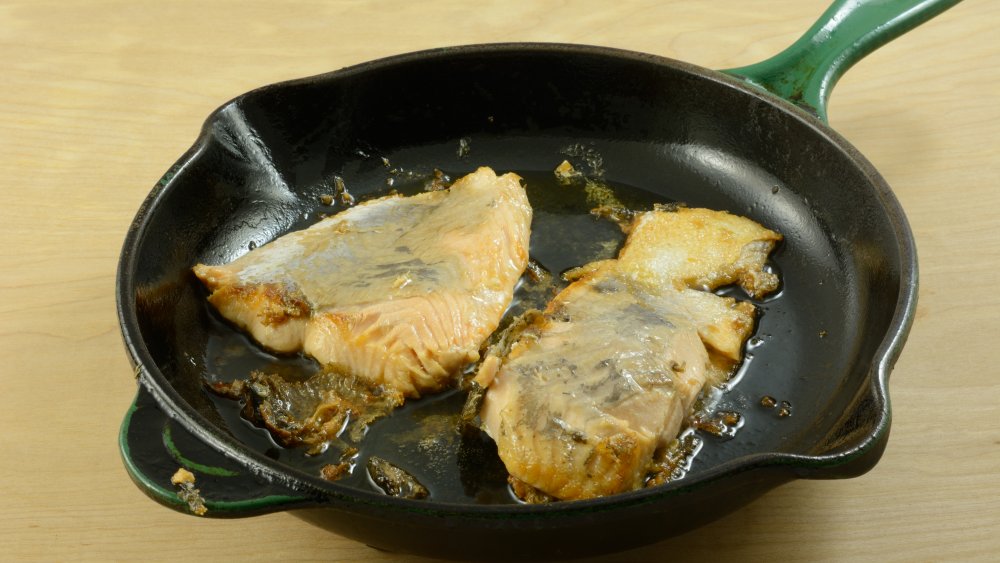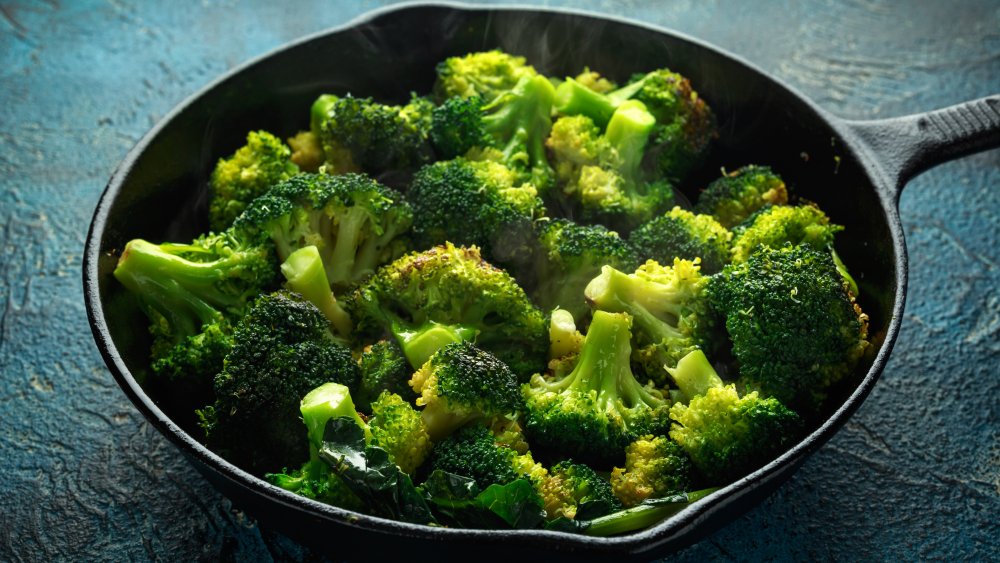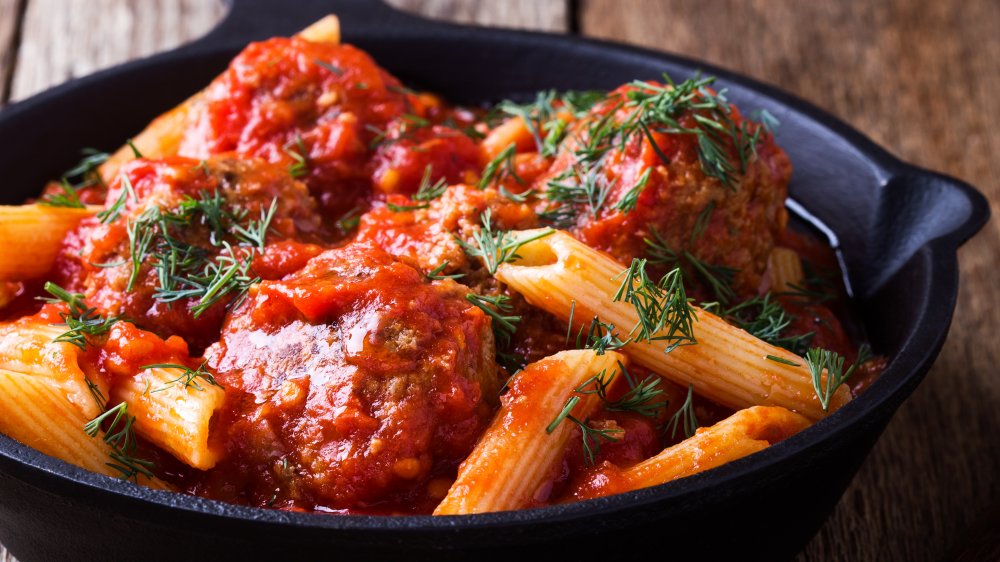Here's What You Should Never Cook In A Cast Iron Skillet
Cast-iron skillets are the all-around workhorse of any even-moderately-equipped kitchen. Not only are they excellent for most types of stove-top cooking, but they can also transition easily from the range to the oven for any tricky two-step cooking techniques. Cast iron pans are also perhaps the most macho of indoor cookware, suitable for use at those times when it's just too cold for even the manliest man to fire up the outdoor grill. And of course, once the weather warms up, cast-iron pans can accompany you on a camping trip, as they were made for using over an open fire. Cast iron is amazing for searing a steak or frying up bacon, but it's not averse to handling a healthy stir-fry or even being pressed into service as a panini maker.
That does not mean, however, that you can use your cast iron skillet to cook all the things. While cast iron is pretty versatile and can tackle everything from pan pizzas to skillet cookies, there are a few huge mistakes you can make with your cast iron skillet, and there are a few (very few) dishes that are best prepared in some other type of pan.
Foods that stick
Unless your skillet is really, really well-seasoned – like, you've just spent the last 6 months using it to cook bacon every day kind of seasoned – avoid using it for any type of food that's bound to stick, such as scrambled eggs, omelets, eggs over easy, and pancakes. Not only will the eggs and pancakes likely turn out a mess if cooked on a non-nonstick surface, but Epicurious warns that if these foods leave any gunky residue in the skillet, you may have to scrub to get it out, and this will remove what seasoning your pan has managed to build up so you'll have to start the whole seasoning process again from scratch.
What's more, even if your pan is seasoned slicker than a greased weasel, Southern Kitchen notes that cast iron retains heat really well. This means that anything that cooks in mere seconds like Julia Child's famous French omelette is pretty much bound to overcook, thus ruining your chances for Instagramming that breakfast.
Fragile fish
Any of the more delicate varieties of fish such as sole, flounder, cod, or tilapia are also better off being cooked in thinner, non-stick frying pans. Taste of Home says that cast iron skillet's tendency to retain heat can cause these thin fish filets to over-brown, and they will also often stick to the skillet while cooking. The really tricky part comes when flipping them to cook the other side, since if you don't do it just right, these types of fish could completely fall apart, and Prevention notes that scraping out a fishy mess after cooking won't do your skillet's seasoning much good.
While some sources mention that salmon can be cooked in cast iron, Prevention cautions against doing so, since the skin of the salmon might stick to the skillet. Catfish and trout may be able to hold up to cast iron cooking, though, while wahoo, mahi mahi and tuna tend to do very well in such skillets.
Smelly foods
Another reason you may wish to avoid cooking fish of any type, stinky veggies like garlic, onions, and broccoli, and certain types of pungent cheese in cast iron, is that these pans retain odors as well as heat. If you also use your skillet to cook baked goods such as cobblers, pies, or cornbread, you might not want these to taste like last night's limburger fondue.
Taste of Home suggests that ten minutes in a 400 degree oven may help to remove or at least reduce any smells inside your skillet, but still recommends you not use it to bake in until it's been used for several less odoriferous dishes. Both Prevention and Epicurious, on the other hand, endorse owning two skillets, with one designated for sweet items, the other to be used for savory (and smelly) ones. As the latter source points out, cast iron skillets do tend to be reasonably priced. In fact, you can even pick up an old, rusty skillet from a flea market and clean and season it up to be as good as — or actually, better than — new, since with cast iron, the more use it gets, the better it works.
Acidic foods (maybe)
Whether or not you can safely cook acidic foods such as tomatoes or any sauces or dishes containing lemon juice, vinegar, or wine in a cast-iron skillet is surprisingly controversial. Okay, so the debate on whether or not it's safe to do so doesn't quite rise to presidential politics-level, nor who should be the next James Bond, how to hang toilet paper, or even Popeyes vs Chick-fil-A, but still, there is quite a bit of disagreement on whether or not cooking acidic foods equates to cast iron abuse.
While many sources claim that food acids react with the cast iron, both damaging the seasoning and causing foods to taste metallic, Taste of Home reveals that there are numerous other who feel that these are just food myths and have no problem using cast iron for their long-simmering marinaras. Chances are, if you've been cooking tomato-y chili or pineapple upside-down cake in your cast iron pan or deglazing it with a splash of vino and you've yet to notice any problems with either your food or your pan, then you should be safe to keep on doing as you've been doing. If, on the other hand, you now start thinking everything tastes like metal – well, you might want to switch to using an enamel-lined pan instead.
